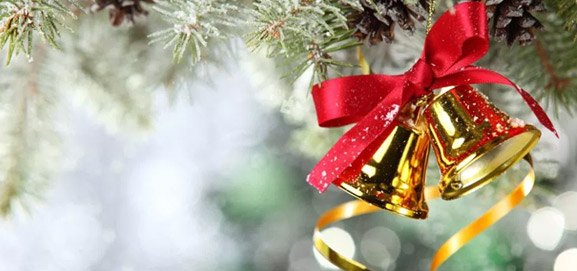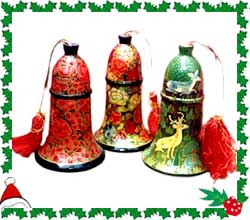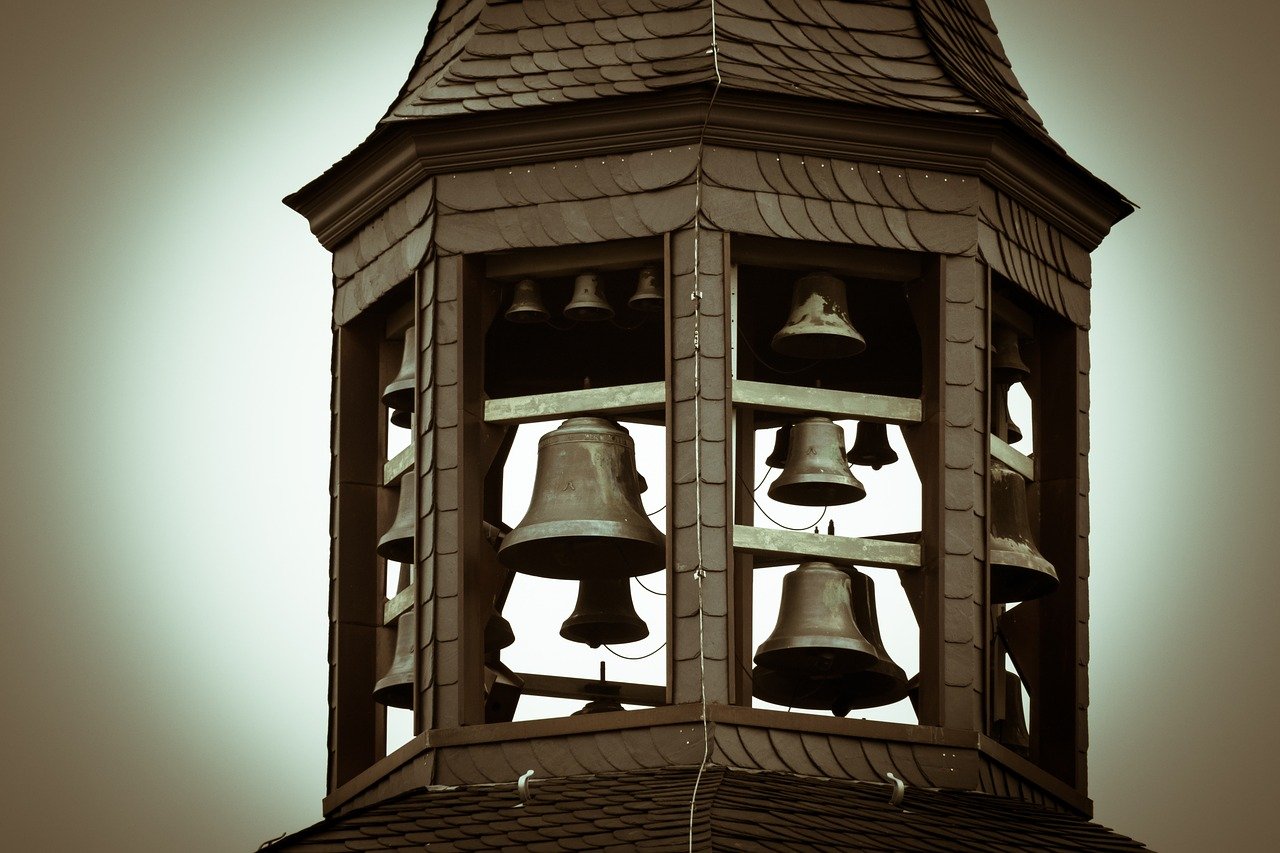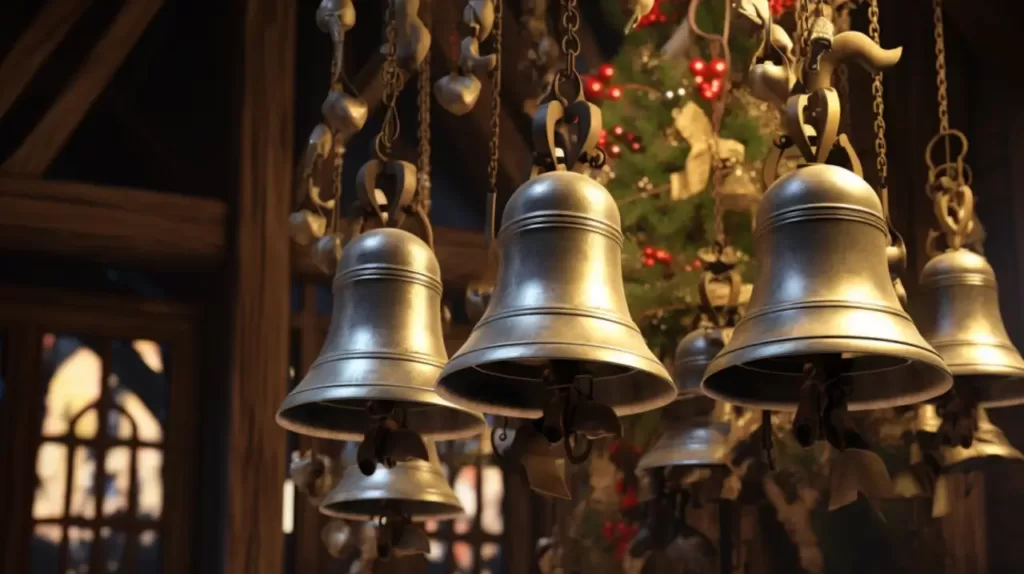The Festive Jingling: Exploring the History, Symbolism, and Cultural Significance of Christmas Bells
Related Articles: The Festive Jingling: Exploring the History, Symbolism, and Cultural Significance of Christmas Bells
Introduction
In this auspicious occasion, we are delighted to delve into the intriguing topic related to The Festive Jingling: Exploring the History, Symbolism, and Cultural Significance of Christmas Bells. Let’s weave interesting information and offer fresh perspectives to the readers.
Table of Content
The Festive Jingling: Exploring the History, Symbolism, and Cultural Significance of Christmas Bells

The sound of bells, particularly those associated with the Christmas season, evokes a sense of joy, wonder, and anticipation. While the image of Santa Claus’s sleigh pulled by reindeer with jingling bells is deeply ingrained in popular culture, the significance of these bells extends far beyond mere festive decoration. This article delves into the rich history, symbolism, and cultural significance of Christmas bells, examining their evolution, their connection to reindeer, and their enduring presence in holiday traditions around the world.
A Journey Through Time: The Origins and Evolution of Christmas Bells
The use of bells in religious ceremonies predates the Christian era. In ancient cultures, bells were often associated with sacred rituals, warding off evil spirits, and summoning deities. The early Christians adopted bells for liturgical purposes, employing them to announce the start and end of services, call the faithful to prayer, and mark important moments in the liturgy.
The association of bells with Christmas likely emerged in the Middle Ages. During this period, bells played a prominent role in religious festivals and celebrations, particularly during the Christmas season. The ringing of church bells announced the arrival of Christmas Eve, signaling the beginning of the festive period.
In the 17th century, the tradition of adorning Christmas trees with ornaments, including bells, gained popularity in Germany. The use of bells as decorations symbolized the joy and celebration of the season, reflecting the belief that the ringing of bells would ward off evil spirits and bring good fortune.
The Mythical Connection: Reindeer Bells and the Legend of Santa Claus
The image of Santa Claus’s reindeer pulling a sleigh adorned with bells is a relatively modern invention, popularized in the 19th century by the writings of Clement C. Moore and Thomas Nast. Moore’s poem "A Visit from St. Nicholas" (also known as "Twas the Night Before Christmas") introduced the iconic image of a jolly, bearded Santa Claus riding in a sleigh pulled by eight reindeer, each with a name and a distinctive personality.
While the poem doesn’t explicitly mention bells, the imagery of the sleigh flying through the night sky with a "dashing away" sound conjures up the image of jingling bells. The association of reindeer bells with Santa Claus solidified in the late 19th century through the illustrations of Thomas Nast, who depicted the reindeer with bells on their harnesses.
Beyond the Myth: The Practical Significance of Reindeer Bells
While the image of Santa’s reindeer with bells is purely fictional, bells have been used on real reindeer for practical purposes for centuries. Herders in northern regions, particularly in Scandinavia and Russia, have long used bells to track their reindeer herds. The sound of the bells helps herders locate their animals, especially in snowy or foggy conditions, and can also be used to guide the reindeer towards desired locations.
Furthermore, the sound of bells can be used to communicate with the reindeer, signaling specific instructions or warnings. For example, a particular bell pattern could indicate the start of a journey, the need to stop, or the presence of danger.
The Cultural Significance of Christmas Bells
Christmas bells hold a special place in holiday traditions around the world. They are not just decorative ornaments, but symbols of joy, hope, and the spirit of the season. The sound of bells evokes a sense of warmth, nostalgia, and the magic of Christmas.
In many cultures, the ringing of church bells on Christmas Eve and Christmas Day signifies the birth of Jesus Christ and the arrival of the festive season. Bells are also commonly used in Christmas carols, adding to the festive atmosphere and contributing to the overall joyous sound of the holiday.
Beyond the Religious Context: The Secular Appeal of Christmas Bells
The appeal of Christmas bells extends beyond the religious sphere. The sound of bells evokes a sense of joy, festivity, and togetherness, making them a popular decorative element in homes, businesses, and public spaces during the Christmas season.
Christmas bells are also a popular gift item, often given as tokens of love, friendship, and good wishes. They are frequently incorporated into Christmas ornaments, decorations, and festive accessories, adding a touch of sparkle and cheer to the holiday season.
FAQs about Christmas Bells:
Q: Are there specific types of bells used for Christmas?
A: While any type of bell can be used for Christmas, some popular choices include sleigh bells, jingle bells, and church bells. Sleigh bells are typically small, round bells with a distinctive jingling sound. Jingle bells are similar to sleigh bells but can be made of various materials, including metal, glass, and plastic. Church bells are larger, heavier bells often used for religious ceremonies, but they can also be incorporated into Christmas decorations.
Q: What is the significance of the color of Christmas bells?
A: The color of Christmas bells often reflects the overall theme of the decoration or the individual’s personal preferences. Red and green are traditional Christmas colors and are commonly used for bells. Gold and silver bells are often associated with luxury and elegance, while white bells can represent purity and innocence.
Q: Are there any superstitions associated with Christmas bells?
A: In some cultures, bells are believed to have protective qualities, warding off evil spirits and bringing good fortune. The ringing of bells on Christmas Eve and Christmas Day is thought to symbolize the expulsion of negativity and the welcoming of blessings.
Q: What is the best way to decorate with Christmas bells?
A: Christmas bells can be incorporated into a variety of decorations, from simple ornaments to elaborate wreaths and garlands. They can be hung on trees, placed on tables, or used to adorn windows and doorways. Bells can also be incorporated into festive centerpieces, gift wrapping, and even clothing accessories.
Tips for Decorating with Christmas Bells:
- Choose the right size and style: Consider the overall theme and size of your decorations when selecting bells. Small, delicate bells are suitable for ornaments and garlands, while larger, heavier bells can be used for wreaths and centerpieces.
- Mix and match materials: Bells come in various materials, including metal, glass, and plastic. Mixing and matching different materials can add visual interest and texture to your decorations.
- Incorporate different colors: Use a variety of colors to create a vibrant and festive display. Consider using traditional Christmas colors like red and green, as well as metallic accents like gold and silver.
- Add a touch of personalization: Personalize your decorations by adding bells with special inscriptions or charms. You can also create your own unique bell ornaments by using beads, ribbons, and other embellishments.
Conclusion:
Christmas bells, with their rich history, symbolic significance, and enduring cultural appeal, continue to play a vital role in holiday traditions around the world. From their origins in religious ceremonies to their modern association with the magic of Santa Claus and the joy of the season, bells remain an integral part of the festive landscape. Their sound evokes a sense of wonder, nostalgia, and the spirit of Christmas, reminding us of the importance of togetherness, hope, and the celebration of life.








Closure
Thus, we hope this article has provided valuable insights into The Festive Jingling: Exploring the History, Symbolism, and Cultural Significance of Christmas Bells. We appreciate your attention to our article. See you in our next article!